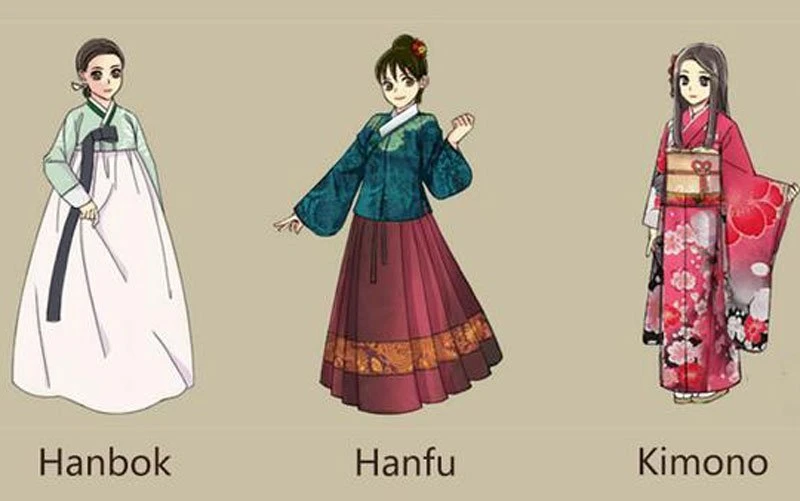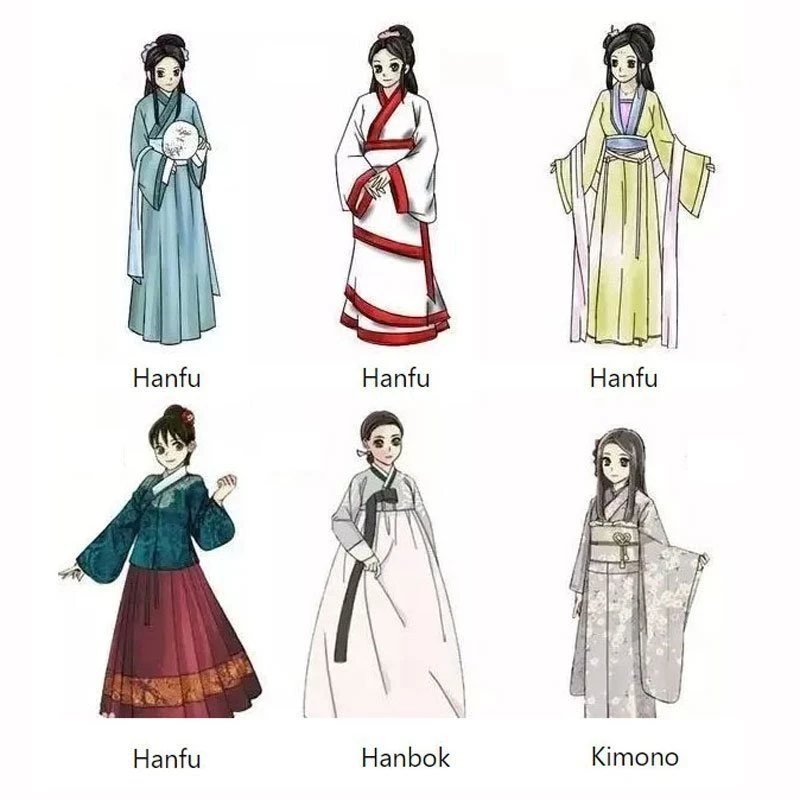A Comparative Journey Through Kimono and Hanfu
The world of traditional Asian attire is a rich tapestry, woven with intricate patterns and deep cultural significance. Two of the most iconic and historically significant garments are the Japanese kimono and the Chinese hanfu. As we embark on a comparative journey through these two garments, we delve into their origins, styles, and the cultural narratives they embody.
The Difference Between Kimono and Hanfu: Origins and Evolution
The kimono, a traditional Japanese garment, has its roots in the Heian Period (794–1185). It evolved from the simple, straight-lined kosode, influenced by Chinese Clothing but adapted to Japanese tastes and aesthetics. The hanfu, on the other hand, is a traditional Chinese clothing style with a history that can be traced back to the Yellow Emperor, over 4,000 years ago. It is characterized by its cross-collar and wide sleeves, reflecting the ancient Chinese philosophy of harmony with nature.

Cultural Significance and Symbolism
The kimono is more than just an article of clothing; it is a canvas for Japanese art and tradition. Each pattern, color, and style carries a specific meaning, often associated with the seasons, social status, or life events. For instance, “a kimono’s pattern can symbolize the wearer’s aspirations or the current season.” In contrast, the hanfu is a symbol of Chinese cultural identity and historical pride. It is often worn during festivals, traditional ceremonies, and by enthusiasts as a form of cultural revival.

Sartorial Splendor: The Art of Wearing Kimono and Hanfu
Wearing a kimono is an art form in itself, requiring careful layering and precise folding. The process is a reflection of the Japanese value of attention to detail and precision. Similarly, donning a hanfu involves a series of steps that honor the garment’s historical significance. Each piece is meticulously arranged to showcase the elegance and grace of traditional Chinese attire.

Modern Interpretations: Kimono and Hanfu in Contemporary Fashion
As we progress into the modern era, both the kimono and hanfu have been reimagined in contemporary fashion. Designers are blending traditional elements with modern silhouettes, creating a fusion that appeals to a global audience. The kimono has inspired casual wear, while the hanfu has been adapted into various styles, from formal gowns to casual streetwear. This fusion not only preserves the heritage of these garments but also propels them into the global fashion scene.
Preserving Heritage: The Role of Kimono and Hanfu Today
In an era where cultural homogenization is a concern, the kimono and hanfu stand as testaments to the rich heritage of Japan and China. They are more than garments; they are cultural ambassadors, educational tools, and symbols of national pride. The resurgence of interest in these traditional garments is a reaffirmation of cultural identity and a celebration of diversity.








The section on sartorial splendor was my favorite! The meticulous process of wearing both garments truly reflects the cultural values of precision and elegance.
The article’s focus on the cultural revival of hanfu is inspiring. As a Chinese person, I feel proud to see the resurgence of interest in this traditional garment. It’s a way to reconnect with our roots and celebrate our heritage.
The article’s focus on the cultural significance of kimono and hanfu is powerful. As a person of mixed heritage, I find it inspiring to see how these garments are being used to celebrate and preserve cultural identity.
I’m a bit concerned about the durability of these traditional garments. As someone who values longevity, I would like to know how well kimonos and hanfus hold up over time and what the maintenance costs are.
The article’s emphasis on the cultural narratives embodied by kimono and hanfu is powerful. As a teacher, I can see how these garments could be used as educational tools to teach students about Asian history and culture.
I’m a bit disappointed that the article didn’t delve deeper into the differences in the construction of kimono and hanfu. As a seamstress, I would have loved to see a more detailed comparison of the sewing techniques and materials used.
The article’s focus on the cultural significance of the kimono and hanfu is spot on. As a person of Asian descent, I feel a deep connection to these garments. They are more than just fashion; they are a way to connect with my heritage.